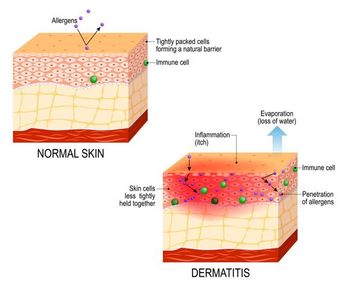
Kaposi Sarcoma of the Genitalia
This painless, bleeding lesion had developed insidiously on the penis of a 47-year-old HIV-positive man. The patient was inconsistently compliant with antiretroviral therapy. He had a history of Pneumocystis carinii pneumonia and widespread cutaneous Kaposi sarcoma. The 2.5-cm, friable but firm, exophytic nodule was on the distal shaft of the penis.
This painless, bleeding lesion had developed insidiously on the penis of a 47-year-old HIV-positive man. The patient was inconsistently compliant with antiretroviral therapy. He had a history of Pneumocystis carinii pneumonia and widespread cutaneous Kaposi sarcoma. The 2.5-cm, friable but firm, exophytic nodule was on the distal shaft of the penis. The differential diagnosis included Kaposi sarcoma, pyogenic granuloma, various deep fungal infections, bacillary angiomatosis, and squamous cell carcinoma. Ted Rosen, MD, of Houston removed the entire lesion. Pathologic findings revealed changes characteristic of Kaposi sarcoma.
Although Kaposi sarcoma lesions on the genitalia are relatively rare, they can occur in conjunction with HIV infection, organ transplantation, and iatrogenic immunosuppression.
Treatment consists of surgical removal or, when feasible, elimination or reduction of factors that lead to an immunocompromised state.
References:
FOR MORE INFORMATION:
- Rosen T, Hoffman, J, Jones A. Penile Kaposi's sarcoma. J Eur Acad Dermatol Venereol. 1999;13:71-73.
Newsletter
Enhance your clinical practice with the Patient Care newsletter, offering the latest evidence-based guidelines, diagnostic insights, and treatment strategies for primary care physicians.






























































































































































































































































































